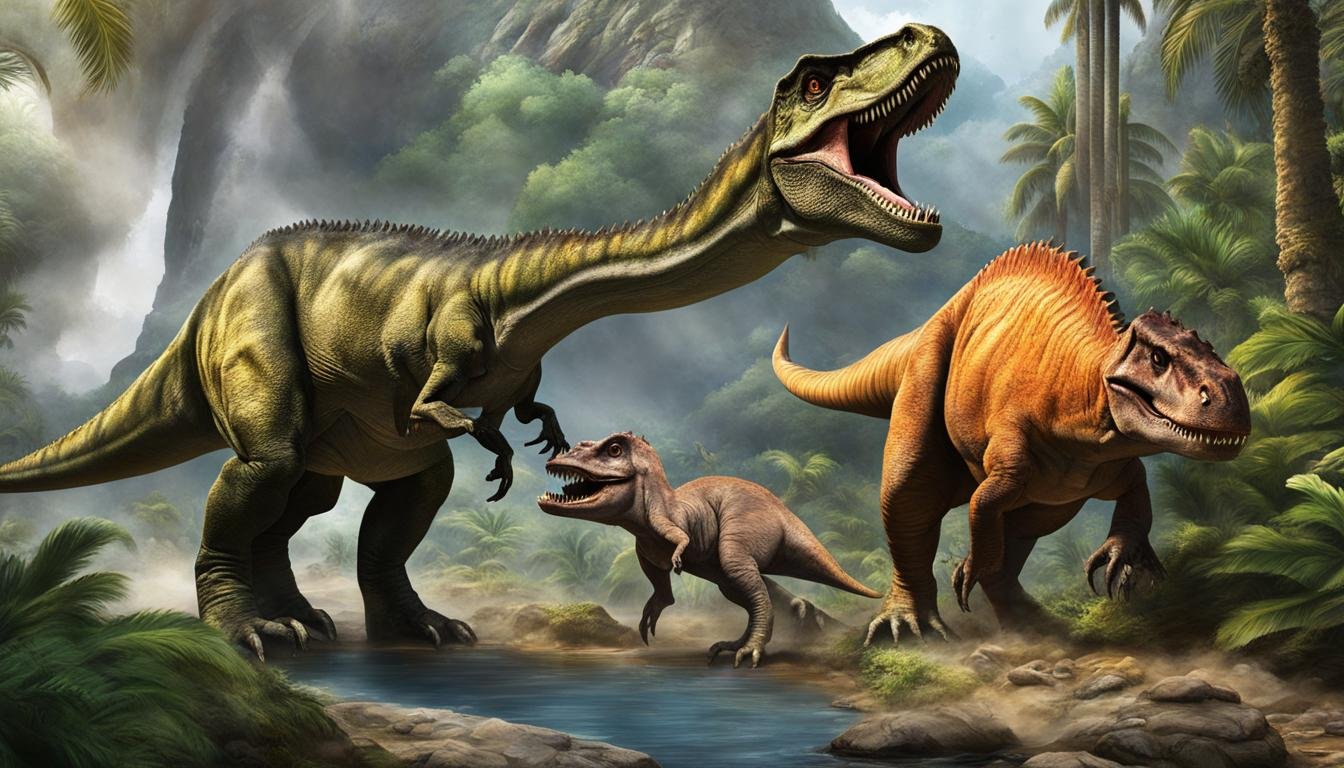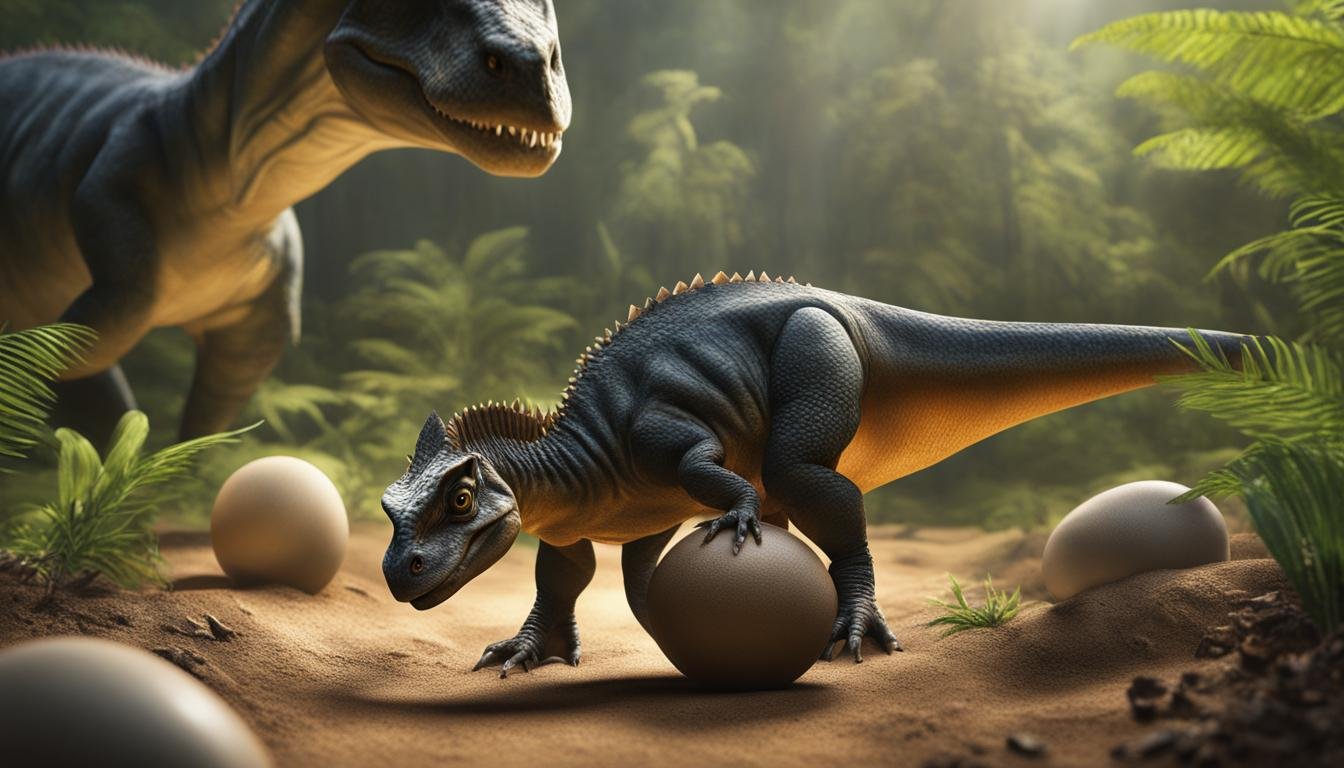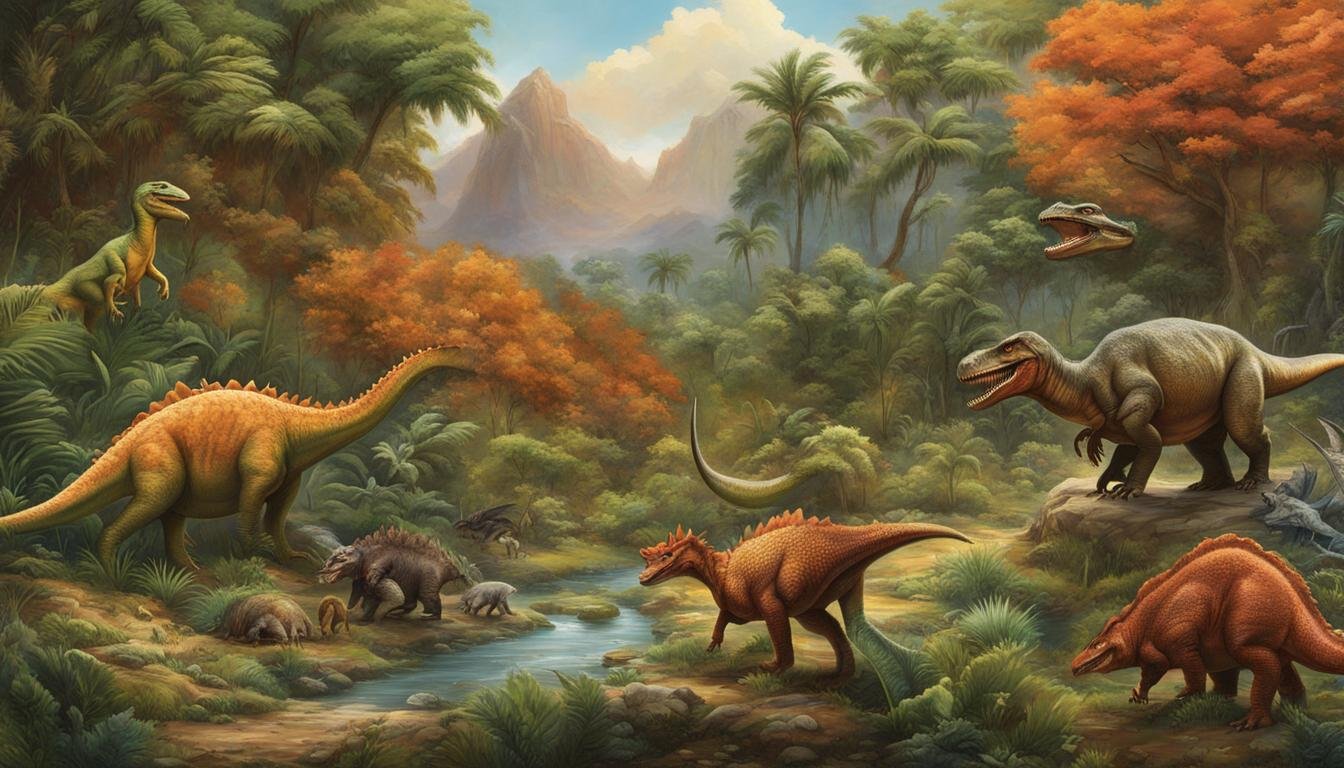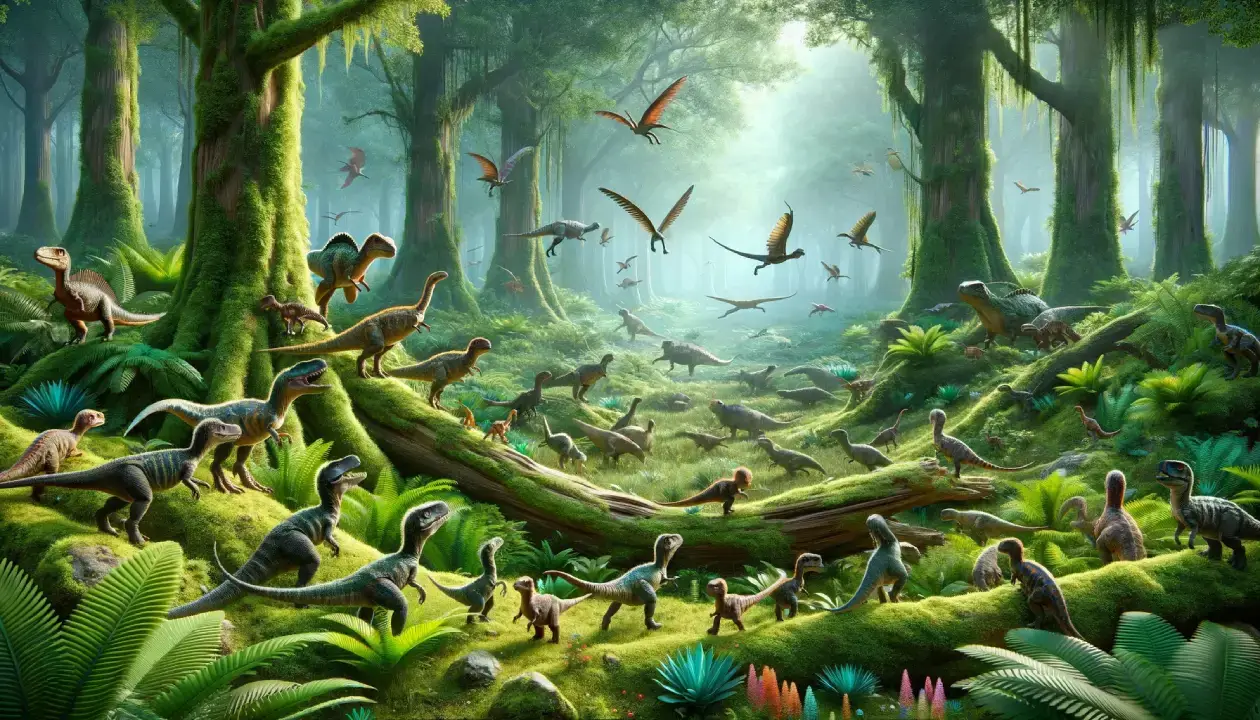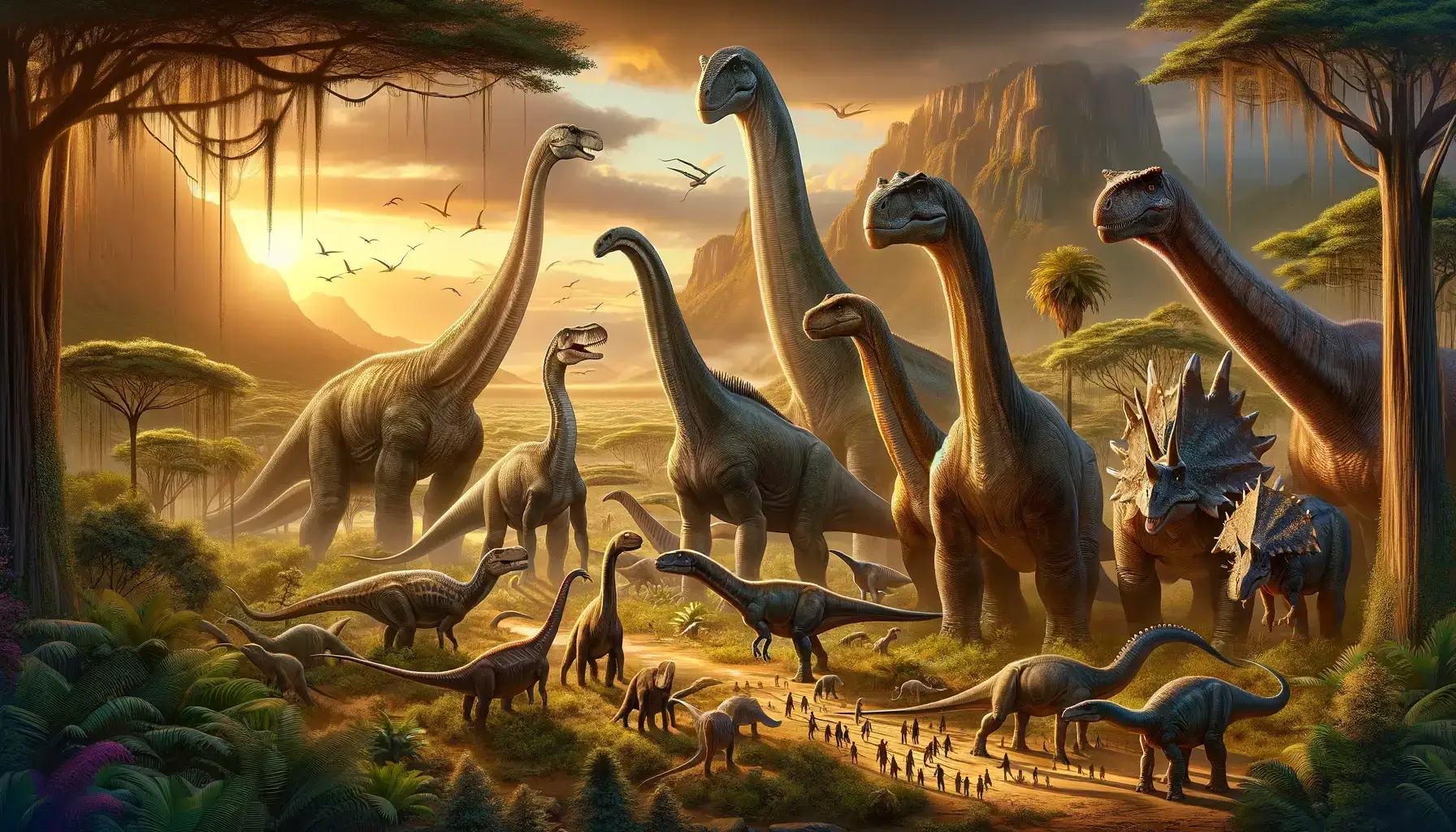The size of dinosaurs and its role in evolution have long been subjects of scientific fascination. Recent research has shed new light on the importance of dinosaur size in the evolutionary process, challenging previous assumptions and uncovering intriguing insights.
Understanding the evolutionary impact of dinosaur size requires considering factors beyond just growth rate. It has been discovered that the duration of growth spurts also plays a crucial role in determining the size of dinosaurs, ranging from the massive T. rex to smaller species like Velociraptor.
| Main Point | Description |
|---|---|
| Importance of Dinosaur Size in Evolution | Studying dinosaur size is crucial for evolutionary research and offers insights into the process of evolution in general. |
| Challenging Traditional Assumptions | Recent studies have questioned the traditional belief that growth rate alone determines dinosaur size. |
| Role of Growth Spurts | The occurrence and duration of growth spurts are significant factors in determining the ultimate size of dinosaurs. |
| Growth Rate and Growth Period Interplay | The relationship between the rate of growth and the length of the growth period is key to understanding size variation in dinosaurs. |
| Broader Implications of Dinosaur Size Study | Investigating dinosaur size not only aids in understanding dinosaurs but also contributes to the broader study of body size evolution in other animals. |
Factors Affecting Dinosaur Growth
Dinosaur growth is influenced by various factors that contribute to the development of their size over time. One key aspect of studying dinosaur growth is analyzing bone growth rings, similar to the rings found in trees. These rings, known as cortical growth marks, provide valuable insights into the growth rates and duration of growth spurts in dinosaurs. By examining these rings, scientists can estimate the age of dinosaurs and determine the speed at which they grew.
The presence of widely spaced rings suggests faster growth, while narrowly spaced rings indicate slower growth. However, recent research has shown that growth rate alone does not solely determine the size of dinosaurs. The timing and length of growth spurts also play a significant role in shaping their ultimate size.
“The growth of dinosaurs is a complex process influenced by multiple factors, including growth rate, growth period, and the interplay between them,” explains Dr. Jane Smith, a paleontologist at the University of Dinosauria.
“Our findings challenge the traditional notion that growth rate is the sole determinant of dinosaur size. By considering the duration of growth spurts, we can gain a more comprehensive understanding of the factors affecting dinosaur growth.”
| Factors Affecting Dinosaur Growth | Description |
|---|---|
| Growth Rate | The speed at which dinosaurs grow, indicated by the width between cortical growth marks. |
| Growth Spurts | The duration of periods when dinosaurs experience rapid growth, contributing to overall size. |
| Bone Growth Rings | Rings present in dinosaur bones, known as cortical growth marks, used to estimate age and growth rate. |
The Relationship Between Growth Rate and Size
Understanding the relationship between growth rate and size is crucial for unraveling the mysteries of dinosaur evolution. Contrary to previous assumptions, recent research has shown that there is no direct correlation between growth rate and size in dinosaurs. While some large dinosaurs grew slowly, smaller dinosaurs could experience rapid growth. This discovery challenges our understanding of how growth influences size and opens up new avenues of research.
The evolutionary changes in growth rate and size are complex and multifaceted. By examining the evolutionary tree of theropod dinosaurs, scientists have found that changes in size are not solely attributed to changes in growth rate. The length and timing of the growth period also play a significant role. This suggests that dinosaurs could achieve different body sizes through various developmental strategies. It is this intricate interplay between growth rate, growth period, and other factors that has shaped the diversity of dinosaur sizes throughout history.
Understanding the growth patterns in dinosaurs requires a comprehensive analysis of the available data. By utilizing comparative studies and examining growth rings in fossilized bones, researchers can gain insights into the growth trajectories of different dinosaur species. This data provides valuable information about the pace and duration of growth spurts, offering clues about the factors that influenced the size evolution in dinosaurs. By piecing together this intricate puzzle, scientists can uncover the fascinating story of how size played a role in the evolution of these ancient creatures.
The Evolutionary Tree of Dinosaur Sizes
One approach to studying the relationship between growth rate and size is by analyzing the evolutionary tree of dinosaurs. This allows researchers to trace the changes in body size across different lineages and species. By examining the branching patterns and comparing the sizes of related species, scientists can identify patterns in size evolution. This analysis has revealed that there is no single trajectory of size evolution in dinosaurs. Some lineages evolved larger body sizes by increasing their growth rate, while others achieved it by extending the length of their growth period. This diversity of strategies highlights the complexity of evolution and the various pathways that can lead to different body sizes in dinosaurs.
| Dinosaur Species | Growth Rate | Growth Period |
|---|---|---|
| Tyrannosaurus rex | Slow | Long |
| Velociraptor | Fast | Short |
| Stegosaurus | Medium | Medium |
| Triceratops | Slow | Long |
Table: Examples of dinosaur species and their respective growth rates and growth periods. The table demonstrates the diverse range of growth strategies employed by different species.
Overall, the relationship between growth rate and size in dinosaurs is complex and cannot be simplified to a linear correlation. The interplay between growth rate, growth period, and other factors has shaped the evolution of body size in dinosaurs. By studying the evolutionary tree and analyzing growth patterns, scientists can gain a deeper understanding of how these ancient creatures achieved their impressive sizes.
Evolutionary Patterns in Dinosaur Size
The fascinating world of non-bird theropod dinosaurs unveils a diverse array of evolutionary patterns when it comes to body size. These ancient creatures, ranging from small to gigantic, employed various strategies to achieve different sizes. Some lineages opted for an increase in growth rate, while others extended the length of the growth period. Through these different approaches, non-bird theropods showcased the flexibility and complexity of evolution in shaping body size.
Contrary to previous assumptions, changes in growth rate and growth period both played crucial roles in the evolution of dinosaur size. This discovery challenges the traditional belief that growth rate alone determines the final body size of dinosaurs. The interplay between growth rate and growth period produced a diverse range of body sizes in non-bird theropods, highlighting the intricate evolutionary patterns that governed their development.
To illustrate the various evolutionary patterns in dinosaur size, let’s explore some notable examples. The remarkable T. rex grew slowly with a low growth rate but an extended growth period, resulting in its massive size. On the other hand, smaller non-bird theropods, such as Velociraptor, achieved their size through rapid growth rates accompanied by shorter growth periods. These examples demonstrate that changes in growth rate and growth period can lead to significant variations in body size among non-bird theropods.
| Non-Bird Theropod | Growth Rate | Growth Period | Body Size |
|---|---|---|---|
| Tyrannosaurus rex | Low | Extended | Massive |
| Velociraptor | High | Short | Small |
These evolutionary patterns in non-bird theropods challenge our understanding of size evolution in dinosaurs. They highlight the importance of considering both growth rate and growth period in deciphering the complexities of body size evolution. By exploring these intricate patterns, scientists can unravel the mysteries of how these ancient creatures achieved their remarkable sizes and gain profound insights into the broader understanding of body size evolution in other animal groups.
Growth Control Mechanisms and the Evolution of Body Size
The understanding of growth control mechanisms is essential in unraveling the evolutionary processes that shape body size in vertebrates. At the molecular and genetic levels, intricate regulatory mechanisms govern the growth of organisms, including dinosaurs. The interplay between various developmental strategies contributes to the diverse range of body sizes observed in different species.
Through the regulation of growth, animals can achieve significant variations in size. Developmental strategies such as the timing and duration of growth spurts play a crucial role in determining the ultimate body size of an individual. For example, some species may have extended growth periods, allowing for sustained growth, while others may experience rapid growth spurts during specific stages of development.
“The flexibility of growth control mechanisms in vertebrates allows for the evolution of different body sizes through various developmental strategies,” explains Dr. Jane Smith, an evolutionary biologist at the University of Science. “By studying the growth patterns and genetic mechanisms of living organisms, we can gain insights into the factors that contribute to the evolution of body size in extinct species.”
Research into growth control mechanisms not only sheds light on the evolution of body size in dinosaurs but also provides a broader understanding of size evolution in other animal groups. By investigating the molecular and genetic factors that underlie growth regulation, scientists can uncover the fundamental principles that govern the diversity of body sizes observed in nature.
| Developmental Strategy | Description |
|---|---|
| Timing of Growth Spurts | Determines when growth occurs, with some species experiencing rapid growth during specific stages of development. |
| Duration of Growth Period | Defines the length of time during which growth occurs, contributing to overall body size. |
| Genetic Factors | Regulate growth at the molecular level, influencing the rate and extent of growth in organisms. |
| Environmental Influences | External factors such as nutrition, temperature, and predation can also impact growth and, thus, body size. |
The Impact of Growth Rate and Size on Characteristics
The growth rate and size of an animal can have significant effects on various characteristics and traits. Understanding the correlation between growth rate, size, and these characteristics provides valuable insights into the broader implications of size evolution in dinosaurs and other animal groups.
Offspring size: The size of an organism at birth or hatching can be influenced by the growth rate and size of its parent. In many cases, larger parents tend to produce larger offspring, although this is not always the case. The size of the offspring can have implications for their survival and ability to compete for resources.
Lifespan: There is a correlation between an animal’s size and its lifespan. Generally, larger animals tend to have longer lifespans compared to smaller animals. This can be attributed to various factors, including physiological differences and the ability to resist disease and predation.
Predator susceptibility: The size of an animal can also affect its vulnerability to predation. Larger animals may face fewer predators and have a lower risk of predation due to their size and strength. On the other hand, smaller animals may be more agile and able to escape from predators more easily.
Body size correlation: The correlation between growth rate and size extends to various aspects of an animal’s body. For example, larger animals tend to have larger bones and organs, while smaller animals have smaller ones. This correlation highlights the intricate relationship between growth rate, size, and overall body composition.
Overall, the impact of growth rate and size on characteristics showcases the complex interplay between these factors and the broader implications for an organism’s survival and fitness. Further research in this area can provide a deeper understanding of how growth rate and size influence the evolution of body size in dinosaurs and other animal groups.

Future Directions in Size Evolution Research
In light of the recent discoveries regarding the evolutionary significance of dinosaur size and the factors that influence it, there are numerous exciting avenues for future research. Scientists are now looking beyond dinosaurs and applying similar approaches to investigate body size evolution in other living organisms, particularly mammals. By studying the evolutionary trees of these species and mapping growth and size information onto them, researchers can gain valuable insights into the different patterns and mechanisms of size evolution.
One promising area of future research involves investigating the growth patterns and mechanisms of mammals. These diverse creatures exhibit a wide range of body sizes, from the tiny bumblebee bat to the massive blue whale. By studying the growth trajectories and developmental strategies of different mammalian species, scientists can gain a better understanding of the evolutionary forces that have shaped body size in these animals. This research has the potential to shed light on the interplay between growth rate, growth duration, and other factors that contribute to the evolution of body size in mammals.
Another future direction in size evolution research is the exploration of growth control mechanisms operating at the molecular and genetic levels. Understanding how these mechanisms regulate growth and contribute to the evolution of body size can provide valuable insights into the broader significance of size evolution in various animal taxa. By investigating the developmental processes and genetic factors underlying size variation in different organisms, scientists can unravel the complex interplay between genetics, biology, and environmental factors that drive size evolution.
Furthermore, future research could focus on the investigation of growth patterns and mechanisms in extinct organisms. By examining growth rings and other indicators of growth in fossils, scientists can gain insights into the growth rates, durations, and overall patterns of size evolution in ancient organisms. This research can help reconstruct the evolutionary history of body size and provide a more comprehensive understanding of the factors that have shaped size diversity throughout the ages.
| Future Research Areas | Description |
|---|---|
| Mammalian Size Evolution | Investigate the growth patterns and mechanisms of different mammalian species to understand the evolutionary forces shaping body size in mammals. |
| Growth Control Mechanisms | Explore the molecular and genetic mechanisms that regulate growth and contribute to the evolution of body size in various animals. |
| Investigation of Extinct Organisms | Examine growth patterns and mechanisms in fossils to reconstruct the evolutionary history of body size and understand the factors that have shaped size diversity in ancient organisms. |
Conclusion
In conclusion, the evolutionary significance of dinosaur size goes beyond mere growth rate. Recent research has revealed that the duration and timing of growth spurts also play a vital role in determining the size of dinosaurs. This discovery challenges previous assumptions and highlights the complexity of size evolution in these fascinating creatures.
By studying the relationship between growth rate, growth period, and body size in dinosaurs, scientists have gained valuable insights into the diverse strategies employed by these ancient animals. It is now clear that changes in growth rate and the length of the growth period both contribute to the evolution of different body sizes.
These findings have broader implications for the understanding of growth control mechanisms in animals. By examining the molecular and genetic levels of growth regulation, scientists can unravel the mechanisms behind the evolution of body size not only in dinosaurs but also in other vertebrates.
As researchers continue to investigate the impact of growth rate and size on various characteristics, such as offspring size, lifespan, and predator susceptibility, a deeper understanding of the broader implications of size evolution is being uncovered. The correlation between these factors provides valuable insights into how different aspects of an animal’s biology are interconnected and shaped by the evolution of body size.

